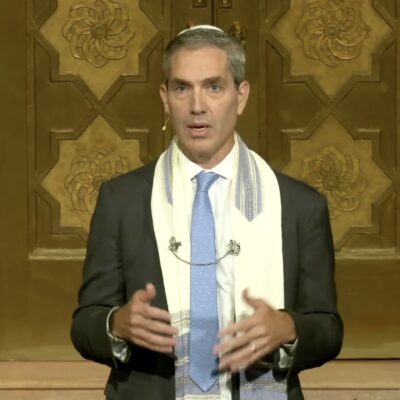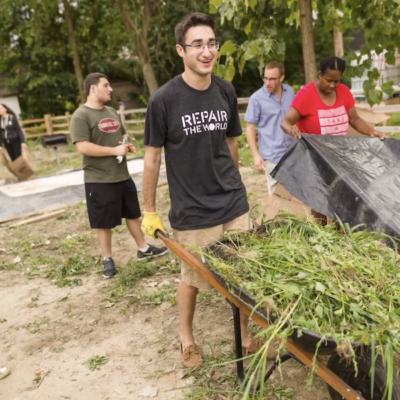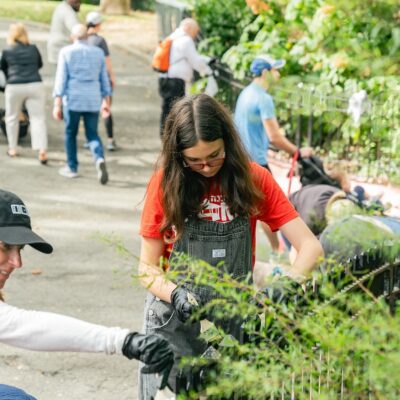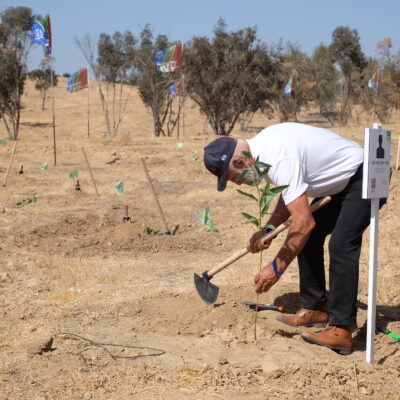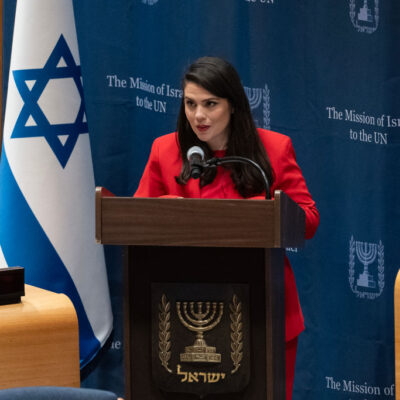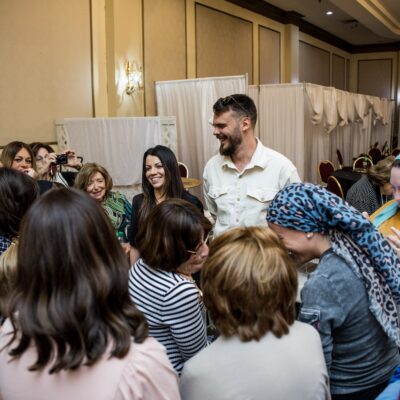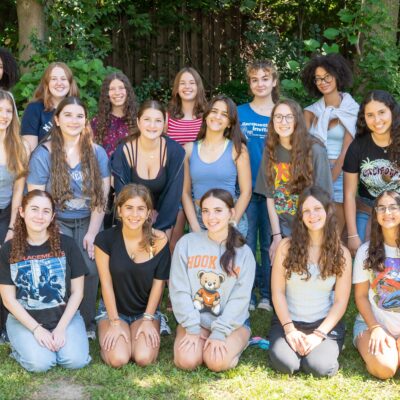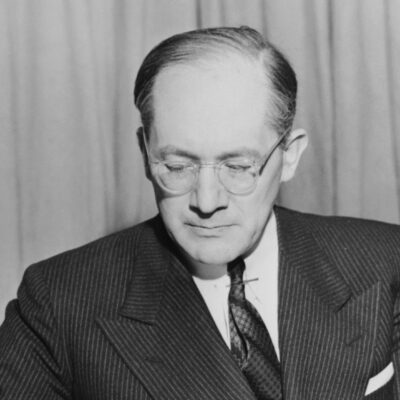How To Turn $25k into $100k: Lessons From Cultivating Young Adult Donors

By Daniel S. Horwitz
I’d like to make a $25,000 investment in your work this year. Now – how can we best leverage those dollars in order to raise additional ones for the organization?
This question, posed to me somewhat nonchalantly by a young adult donor over lunch, almost made me spit out my food from shock. Talk about a dream come true! But how to make the most of the opportunity?
The Well, now in its 4th year serving Metro Detroit’s young adult population, has overwhelmingly relied on the support of large-scale donors and Foundation grants as we’ve grown from an initial budget of $175,000 to a budget of over $400,000 supporting over 300 gatherings each year, 35 small groups meeting each month, hundreds of coffee dates, constantly renting out third-spaces, and a full-time staff team of four. We’ve been featured in the Slingshot Guide the last two years, are one of the inaugural Open Dor Project communities, and have cultivated models of Jewish learning and connection that have received national recognition and are being piloted in partner cities around the country.
Last year, with two years of community building under our belts, we engaged in our first forward-facing fundraiser – a 3-day relationship-based crowdfunding campaign – in which we raised roughly $38,000 from the young adults we serve (with $15k of that from the same young adult donor now keen on upping his investment to $25k). As some of our pilot funding begins to scale back as we shift to mezzanine stage organizationally, we needed to figure out a compelling way to significantly grow the portion of our budget being supported by our participants.
So – how best to leverage the investment to grow our participant commitments?
After brainstorming over lunch and checking in with my team (both lay and pro), we decided that we would strive to leverage the $25k investment two-fold:
- Use the $25k as a challenge grant to line up 25 $1k donations from young adults/couples excited about our work and capable of investing at that level (last year, we only had 2 participants donate at the $1k level); and
- To then use that $50k to create 2-1 match to raise an additional $25k from the rest of our participants, with a total campaign goal of $75,000.
One of my mentors continually reminds me that fundraising is not being a nuisance – rather it’s providing people with the opportunity to align their wallets with their values. With that sentiment in mind, in the two weeks that followed our lunch, we were able to line up 38 young adults/couples to invest at the $1k level (I was shocked!). In our mid-sized Motor City Jewish community, $1k is a significant amount of money – especially for millennials! It was incredibly humbling to see such a positive response, simply by virtue of asking and providing the opportunity.
Those 38 commitments resulted from roughly 75 targeted asks during that two-week period. Even those who said “I can’t do that amount at this time, I’m sorry” all still invested, and the result was that by virtue of being asked to invest at the $1k level, their investments jumped remarkably year-over-year, with many climbing from $36 to $180, from $180 to $360, etc. Whether due to flattery, ego, or the pitch, when asked to give an amount larger than originally planned, people stretched.
With commitments in hand, we prepared for our second annual 3-day #BuildTheWell crowdfunding campaign the next month (Dec. 16-18), able to advertise a 2-1 match to the rest of our participants. I admittedly was concerned we wouldn’t hit our $25,000 goal, given that we had secured $13,000 more from $1k-level donors than originally anticipated. But with our strategy in place, designed and executed by both dedicated lay and professional staff, we dove in.
After 3 days (short campaign = sense of urgency = there’s no time to waste, just make the donation now rather than procrastinate!), our team had secured over $37,000 from more than 350 additional young adult donors, the overwhelming majority of whom were responding to personal asks. This wasn’t a “reply to an email solicitation” campaign – this was a “who are our pro or lay people who are in close relationship and excited about reaching out to each person” kind of campaign, and then empowering them to do so. (In addition to the $100,000 total raised from young adults, we also received roughly $17,000 from parents, grandparents, and more senior community leaders during the 3-day campaign, pushing our total to just over $117,000).
What was our strategy? Simply put, we didn’t ask people to “donate to our cause” – rather, we invited them to invest in the community we’re building together, and we then made it a point to shout gratitude from the (virtual/digital) rooftops.
One need only to look around at our communal edifices to see that donors in the Jewish community have been excited about putting their names (and/or those of their loves ones) up on walls. For a generation that doesn’t have the means at this stage and that doesn’t regularly frequent such institutions, we decided to utilize the wall they engage with most frequently to express our gratitude: their Facebook wall. Every single young adult donor, regardless of amount, received a personalized shout-out on Facebook, expressing our gratitude and saying nice, content-rich things about them. We had a team of folks making such posts – a great way to empower lay leaders and our board! Psychologically, there’s no question we love having others say nice things about us – and to have said things expressed publicly is even better (there were fewer than five donors who asked that we refrain from a public Facebook post, preferring their investment be anonymous). We also heard from a number of people who said they had donated because they saw the public gratitude posts all over their Facebook newsfeeds and wanted to see what nice things our team would have to say about them.
The relevant best practice literature suggests we should strive to say “Thank You” no fewer than seven times to donors between asks – and there is nothing millennials like more than receiving physical mail that is not a bill or an ask for money! So, in addition to the public Facebook posts, we proceeded to hand-write and personalize over 400 thank you notes to each donor – another great way to show appreciation while also empowering our lay and professional team. I understand that at our size, dealing with only 400 donors, we’re able to put the personal touch on things in a way that it’s much harder to do for larger organizations. That said, I’d argue that making our large organizations feel smaller – and making each individual donor feel special/appreciated, regardless of their investment amount – is going to be a key to success with the millennial generation, which is overwhelmingly not going to give out of a sense of obligation / to fulfill their “Jew tax” as previous generations often did and still do.
So what are the key takeaway learnings we’re excited to share?
- It’s fun to think creatively about how to leverage larger investments! They sky’s the limit in terms of different structures that can be utilized!
- Contrary to popular belief, young adults are ready, willing and excited to invest in the organizations they care about / see that they benefit from being involved with, and when asked to invest a reach amount, will likely give more than they originally anticipated giving, even if they don’t hit the requested amount.
- Relationships are key! Ron Wolfson rejoice! But seriously – it’s by virtue of the personal relationships formed as a result of our work (both with the professional staff and with one another) that created an environment in which our young adult participants were excited about investing in community.
- Gratitude is key. Finding ways to say thank you over and over again, regardless of the amount invested (and meaning it!), is essential. There are so many things people can do today with their dollars. Whether someone donates $5 or $1,000 it’s important we shower gratitude and celebrate them. It makes giving feel good and inspires more!
For an organization exclusively serving young adults in a mid-sized rust belt community, garnering $100,000 in support from hundreds of our participants feels amazing. With an annual organizational budget now just north of $400,000 it’s also incredibly humbling (and sometimes scary, being honest) to know that the only reason I get to do what I do, and we get to do the work we’re doing, is due to the generosity and investment of larger scale donors and Foundation support. I’m grateful for the young adult donor who challenged us to get creative with his $25k investment, for the funding partners we have, for those we hope to be in relationship with in the future, and am eager to share what we’ve learned if we can at all be helpful to your young adult community-building and donor cultivation efforts!
Rabbi Dan Horwitz is the founding director of The Well, a nationally recognized (Slingshot ‘17 & ’18) Jewish community-building, education, and spirituality outreach initiative of the Lori Talsky Zekelman Fund at Temple Israel of Metro Detroit geared to the needs of young adults. Designated one of America’s Most Inspiring Rabbis by The Forward, Dan is a graduate of the Clergy Leadership Incubator housed at Hazon, is 1/3 of The Open Dor Project’s inaugural cohort of spiritual entrepreneurs, is part of ROI Community, and is a hummus enthusiast. He can be reached at dan@meetyouatthewell.org

 Add EJP on Google
Add EJP on Google